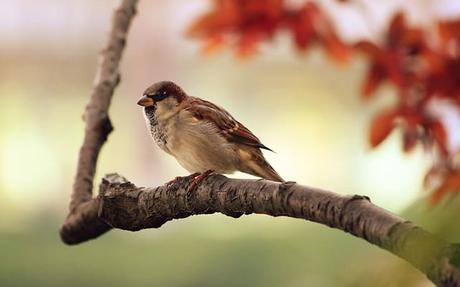Three billion birds lost their lives in the US and Canada since 1970, which accounted for more than one in four birds across diverse groups and habitats. It is leading to a “widespread ecological crisis” as per scientists who published the new study.
A 29% decline in the populations of the birds across diverse groups and habitats was observed by the researchers and included songbirds such as meadowlarks to long-distance migratory birds such as swallows and backyard birds like sparrows.

“Multiple, independent lines of evidence show a massive reduction in the abundance of birds,” said Ken Rosenberg, the study’s lead author and a senior scientist at the Cornell Lab of Ornithology and American Bird Conservancy.
“You have these huge flocks of ducks and geese. That didn’t exist in the ’60s and ’70s,” Rosenberg said. “Bird populations have been shown to be resilient, and they can bounce back pretty quickly — maybe not in all cases, but at least at this point we’re hopeful.”
The findings are a “wake-up call” according to co-author Adam Smith from Environment and Climate Change Canada.
There are consistent population losses with what scientists have counted among amphibians and insects.
The reason for the drop was not analyzed by the study and published today in the journal Science. However, more birds are dying around the world and having less success in breeding largely because agriculture and urbanization activities have damaged and destroyed their habitats.
The declines were calculated by the researchers with 10 years of information on migratory birds from National Weather Service Next Generation Weather Radar (Nexrad), a network of radars capable of detecting insects and birds as they track precipitation. The survey data was corroborated by the radar data.
Review of 50 years ground data from various sources by the researchers includes the National Audubon Society Christmas Bird Count, North American Breeding Bird Survey, the Manomet’s International Shorebird Survey, the Canadian Wildlife Service, and citizen science from the United States Geological Survey.
“This is an impressive paper assembling several big datasets,” Maria Dornelas, a biologist at the University of St. Andrews in Scotland, who was not affiliated with the study, said in an email. “I think the result that bird abundance in the US has declined on average in the past 40 years or so is really important and needs to inform bird conservation in the US.”
The population of the Grassland birds was reduced by 53%. Shorebirds which were already at low numbers recently have lost one-third and more of their population. Radar of the night skies found a 14% drop in the volume of spring migration in just the last decade.
Birds are declining in number for various reasons such as collisions with glass and buildings, domestic cats, a decline in the insects that birds eat because of widespread use of pesticide. Alteration bird habitats due to climate change also compound those problems.
However, all bird species did not decline. Raptors and waterfowl numbers increased possibly because conservation effort focused on these species, including under the Endangered Species Act.
According to Michael Parr, president of the American Bird Conservancy and co-author, saving birds will require allotment of funds for the conservation of bird, bans on harmful pesticides, and changes in policy.
“We’re making the wrong moves now to sustain nature for the future, and this is an indication that nature is unraveling and that ecosystems are highly stressed,” said Mike Parr. “Our generation is going to survive it, and probably the next generation will, but who knows where the tipping point is.”
“Each of us can make a difference with everyday actions that together can save the lives of millions of birds – actions like making windows safer for birds, keeping cats indoors, and protecting habitat,” Parr said.

